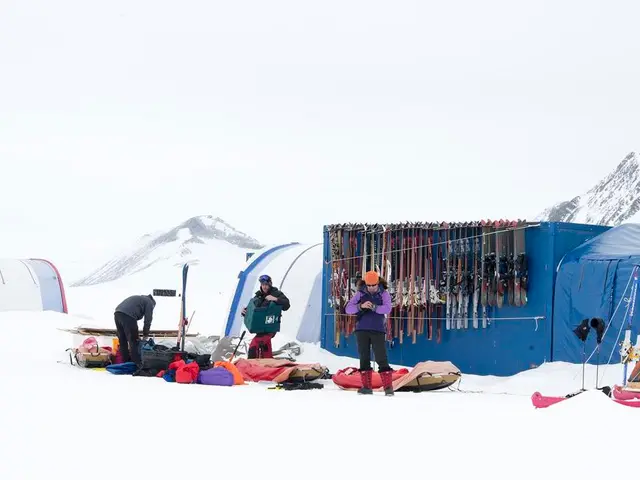Expert Handbook for Navigating Flight Arrangements and Travel Coverage
Planning a trip to a unique destination like San Marino can be an exciting yet daunting task. To ensure a smooth and economical travel experience, follow these best practices:
1. Plan Your Itinerary Thoughtfully
Start by making a wish list of destinations and activities, then adjust based on your available travel days to avoid overpacking your schedule. For instance, allocate more time to top-priority destinations and fewer days to incidental stops.
Since San Marino is a microstate with limited direct flights, plan your route carefully, usually flying into nearby major hubs like Italy’s Rimini or Bologna airports, then arrange ground transport. Maintain flexibility: avoid a rigid hourly itinerary, allowing time to explore and adapt based on local insights and unexpected opportunities.
2. Utilize Expert Travel Advisors
Consider working with travel advisors or agencies specializing in multi-destination planning. They can curate culturally rich, smooth itineraries covering flights, accommodations, and local transfers, minimizing logistical stress. Advisors can also assist with arranging meet-and-greet services and airport transfers, improving comfort especially after long flights.
3. Optimize Flight Bookings
For complex or multi-stop trips, consider round-the-world (RTW) tickets or multi-city flight bookings, which might offer better rates than separate one-way tickets. Compare different airline alliances and booking platforms to secure the best deals tailored to your travel path, bearing in mind transit rules and visa requirements.
4. Research Visa and Health Requirements
Conduct thorough research on visas, vaccination, and entry rules for all countries included in your itinerary, including transits. Use official sources like government websites or trusted travel advisory services to ensure compliance and avoid last-minute issues.
5. Purchase Comprehensive Travel Insurance
Select travel insurance that covers trip cancellation, delays, medical emergencies, and lost luggage, tailored to the nature of your trip and destinations. For unique or less-traveled destinations, check that the insurer covers medical evacuation and local healthcare scenarios, which can be critical if the destination has limited facilities.
6. Prepare for Ground Transportation and Local Logistics
Research and book reliable transfers from airports to your accommodations, especially when traveling to places like San Marino where direct air connections may be absent. Consider private transfers or meet-and-greet services to reduce stress and avoid delays on arrival.
7. Stay Flexible and Informed Throughout Your Trip
Keep monitoring flight schedules and local conditions to adapt plans if needed. Good communication channels (online apps, local SIMs, travel advisors) help manage changes smoothly. Interact with locals and tourist offices to enrich the experience beyond the guidebook and adapt your plans based on fresh input.
By integrating these methods—thoughtful itinerary planning, expert advice, proper visa and insurance preparation, and flexible logistics management—you can ensure efficient and enjoyable travel to distinctive destinations like San Marino while optimizing costs and minimizing hassle.
Remember to book travel insurance soon after booking to maximize benefits, including enhanced cancellation options. It's recommended to book at least 6-8 weeks in advance for better prices compared to last-minute purchases. Travelers can save between 20% to 40% by booking flights during off-peak seasons or days of the week, typically Tuesday and Wednesday.
Utilize airport apps to check real-time flight statuses and terminal information during layovers. Direct flights generally reduce travel time by up to 30% compared to connecting routes. Flexible date searches can reveal cheaper options; shifting travel dates by a few days can mean savings of around $60 per ticket on average.
Ensure luggage is tagged for final destinations if on a single ticket to minimize handling. Always read the fine print regarding baggage fees and other ancillary charges. Evaluate the following components before purchasing specialized coverage: emergency medical coverage, trip interruption, adventure sports coverage, personal liability, and natural disaster coverage.
Read reviews and ratings on specific flights to gauge the quality of service and reliability of airlines. Sign up for fare alerts to be notified when prices drop or rise for specific routes. Implementing flexible travel schedules can yield significant savings and enhanced options. A minimum of 24 hours notice is recommended for airfare changes to avoid fees up to 25% of the ticket price.
Keep all receipts related to expenses incurred from delays or cancellations for claims process. Utilize fare comparison websites to identify the most economical choices. Utilize mobile applications to consolidate itinerary details for seamless access and real-time updates. Having a backup plan for airport transfers during peak hours is recommended.
Use a spreadsheet or dedicated app to organize essential data such as flight number, departure and arrival times, airline contact information, and booking reference. Always check for any hidden fees related to luggage or seat selection before finalizing your booking. Compare policies rigorously, examining exclusions, coverage limits, and deductibles.
Direct routes can save up to 30% travel time compared to connecting routes. Organize flight bookings using tools like Google Flights, Skyscanner, or Kayak for effective price and schedule comparison. Approximately 30% of passengers miss connections due to insufficient layover time. Set fare alerts from travel websites to capitalize on price drops and adjust plans based on fare fluctuations.
Utilize filters for personalized searches, focusing on specific preferences like preferred airlines, layover durations, or travel times. Ride-sharing apps can provide an average wait time of 10 minutes or less. Check the baggage policies before booking, as some low-cost carriers may impose hefty fees for checked luggage.
Explore lounge access options during lengthy layovers; rates average around $50 per visit. Look for travel insurance policies that cover trip cancellation, trip interruption, medical coverage, emergency evacuation, and lost luggage. Setting flexible date searches can lead to significant savings; shifting a trip by just a few days can reduce costs by up to 20%.
Allow a minimum of three hours for international connections and two hours for domestic ones to accommodate potential delays and security checks. Review exclusions carefully; many policies may exclude coverage for activities deemed too risky. When engaging in adventure travel, opt for specialized coverage that addresses unique risks.
Pre-booking airport transfers can save up to 30% compared to booking upon arrival. The booking window for the best deals is generally six weeks prior to departure. Multi-city itineraries can lead to significant savings compared to round-trip options. Alternative airports can yield pricing reductions, sometimes exceeding 40% less than major hubs.
Monitor fare alerts to capitalize on price drops. Consider trip cancellation coverage, medical coverage, lost luggage protection, and emergency assistance services for travel insurance. Check customer reviews and ratings before purchasing travel insurance. Research the airport layout beforehand; over 80% of major airports offer interactive maps.
By following these tips, you can ensure a seamless and cost-effective travel experience when planning and managing flight itineraries and travel insurance—especially for unique destinations like San Marino. Enjoy your journey!
- In addition to researching financial aspects for your personal lifestyle, consider investigating travel costs when planning a trip to unique destinations like San Marino.
- To save on travel expenses, look into league tables that rank airlines based on affordability for flights, food-and-drink offerings, and overall passenger experience.
- When it comes to investing in a travel plan, consider allocating funds towards technology gear, such as noise-cancelling headphones and portable chargers, to improve comfort during long flights.
- Business travelers can optimize expenses by taking advantage of perks like lounge access, airport transportation, and early check-in when staying at hotels, which are often offered through corporate partnerships.
- As part of wealth management, planning for travel includes setting a budget for accommodation, food-and-drink, and entertainment, considering the average cost of living at your destination.
- To integrate travel into career development, seek opportunities for remote work or professional conferences at unique destinations like San Marino, which can broaden your network and expand your knowledge in the fashion-and-beauty or education-and-self-development industries.
- Maintaining a lifestyle that includes travel and personal-finance management can lead to increased wealth and a more diverse network of connections, whether in the sports, technology, travel, or career-development sectors. In the end, thoughtful planning and efficient budgeting can turn travel into a fulfilling and enriching experience.




